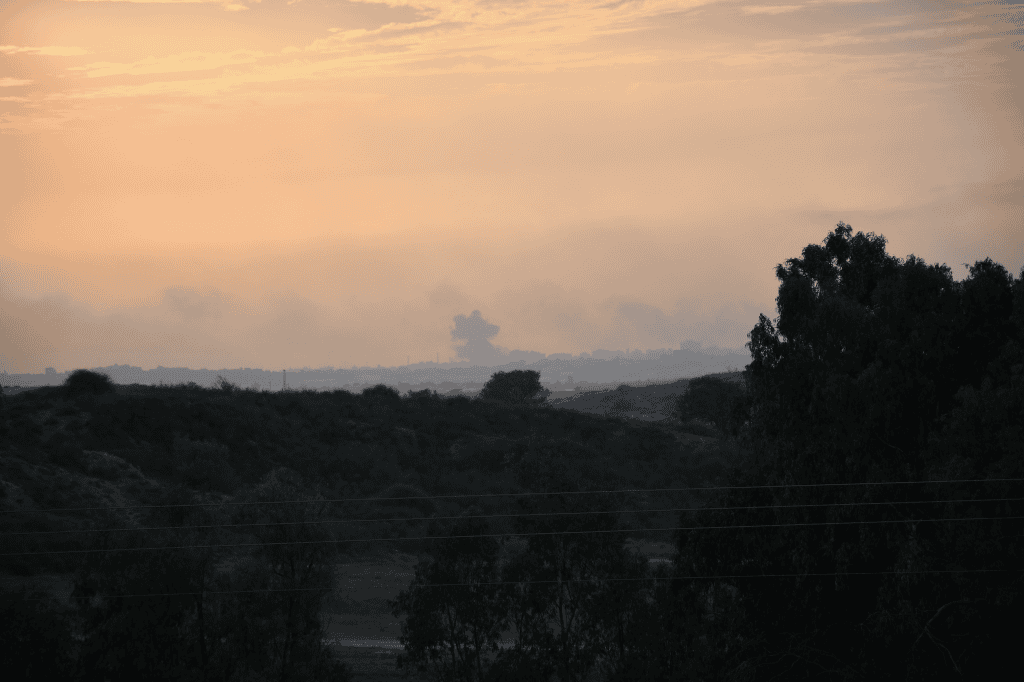
Seth Frantzman is reporting from Israel
Israel is concentrating on the battle against Hamas in Gaza, Israel’s IDF spokesperson Rear Admiral Daniel Hagari said on Tuesday evening, while Iranian-backed groups in Lebanon and Yemen continue to threaten Israel with attacks on other fronts.
This multi-front threat is one that Israel trained for over the years, however the way it has developed is unique to this conflict which began with the Hamas attack and massacre of Israelis on Oct. 7. Since then Hezbollah has carried out daily rocket and missile attacks, and the Iran-backed Houthis in Yemen have attempted to target Israel at least three times. There are also tensions in Syria and Iran-backed groups in Syria and Iraq have targeted US forces.
On Oct. 31, sirens sounded in Eilat in the morning, a city in southern Israel that sits on the Red Sea between Egypt and Jordan. A ballistic missile threat was intercepted by Israel’s Arrow 3 air defense system. Usually a tourist town, the area’s hotels are now used by Israelis evacuated from around 100 communities near Gaza and near the Lebanese border. The city has therefore swelled and the evacuees must make do with temporary education for children and deal with other challenges. Sirens and threats from Yemen are now increasing. Pro-Iranian media such as Al-Mayadeen have detailed the threats to Eilat. The same media also highlights threats from Lebanon by Hezbollah.
Hezbollah generally carried out attacks during the day and Israel has responded proportionately, targeting the source of fire. In addition, Israel carries out sorties at night. For instance, overnight from October 30 to October 31, Israeli fighter jets struck Hezbollah terror infrastructure in Lebanon, the IDF said. Later in the day, anti-tank missiles were fired from Lebanon. Two failed rocket launches also occurred and mortars were used to target Tel Hai in northern Israel. “In response, the IDF struck Hezbollah infrastructure in Lebanon and responded toward the sources of the fire,” the IDF said. The continued like this, with mortars fired at another community further west along the Lebanon-Israel border. This has become the pattern of threats and response.
Israel remains focused on Gaza, Hagari said in the evening during a press conference. Israel suffered its first casualties in the ground operation in Gaza on Tuesday. Two IDF soldiers were killed, the IDF said. This came after a night when Israel had struck 300 targets in Gaza, including anti-tank missile and rocket launch sites, as well as tunnels. Hamas uses a network of tunnels in Gaza to carry out attacks and in the opening days of the ground operation, terrorists were spotted in a tunnel near Erez, a crossing point.
The clashes in Gaza are visible from southern Israel. In the city of Ashkelon, which was targeted by rocket fire on Tuesday, air strikes and naval fire on Gaza can be heard. The city is partly deserted and its beaches, usually full of people, are empty. A rocket fell in Ashdod, north of Ashkelon on Tuesday as well, and more rockets targeted Tel Aviv and central Israel. That illustrated Hamas still has the rocket capability to fire long range. It has fired more than 8,000 rockets since the war began. From the city of Sderot, which overlooks northern Gaza, the rocket fire on Ashdod could be seen Tuesday, as well as counter-strikes aimed at the origin. Small arms fire, artillery and airstrikes were also audible.
Israel continued to strike at key Hamas commanders, including Nasim Abu Ajina, whom the IDF described as the commander of the Beit Lahia battalion of Hamas’ northern brigade. The IDF said he “directed the massacre on October 7th in the Kibbutz Erez and Moshav Netiv HaAsara.” Ibrahim Biari, the Commander of Hamas’ Central Jabalya Battalion, was also killed, the IDF said. He was reportedly also responsible for the Oct. 7 attack. A full map of the massacre sites has also now been published online showing the extent of the Oct. 7 killings.
Tuesday saw increased clashes in Gaza with infantry units. The Givati Brigade, which also led one of the first large raids into Gaza on Oct. 26, captured a “stronghold” of Hamas “during their ground activities today, the troops killed approximately 50 terrorists,” the IDF said. The progress of the offensive has become the subject of speculation in regional and international media. Al-Ain media in the Gulf questioned why Israel appears to be “slowing down” its operations in Gaza, while the New York Times published satellite photos showing armored vehicles operating several miles into Gaza near the beach.







